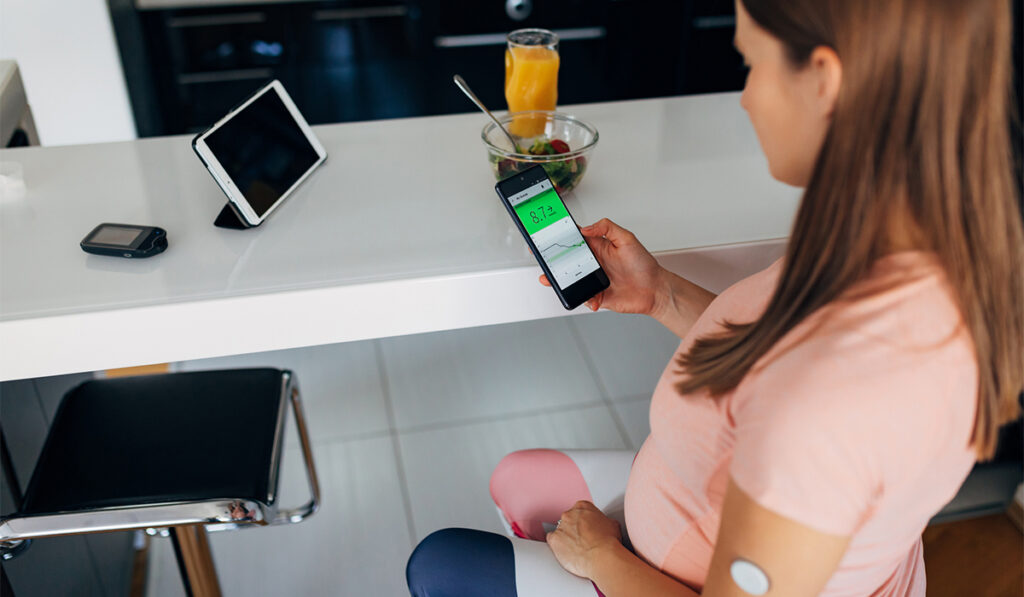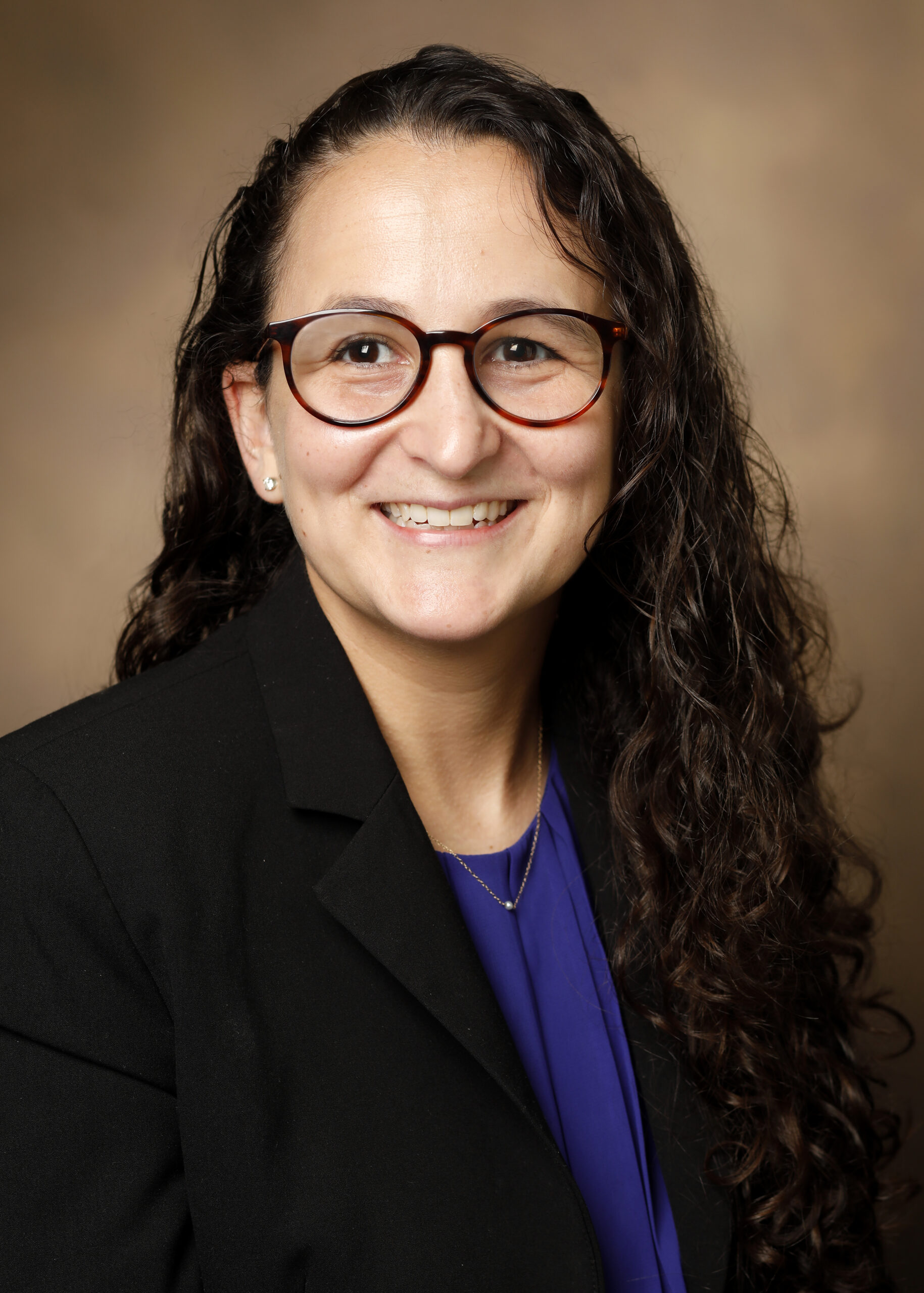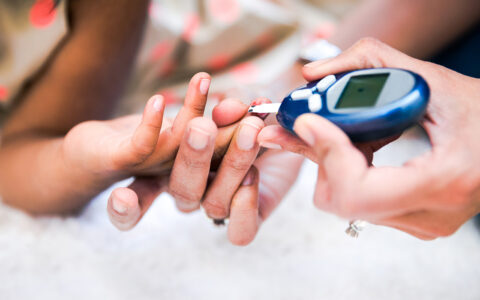Wearable technology popularized by smart watches and fitness devices in the early 2000s are now poised to offer vital insight into the health of young people with rare diseases, according to researchers at Monroe Carell Jr. Children’s Hospital at Vanderbilt.
Their flagship project is the use of continuous glucose monitors (CGMs) to assess early changes in glucose metabolism among patients with Friedreich’s Ataxia, led by Jaclyn Tamaroff, M.D., a pediatric endocrinologist at Vanderbilt University Medical Center who specializes in glycemia and insulin sensitivity.
Tamaroff and her team are using CGMs to better understand how diabetes develops among patients with the inherited, multisystem neurodegenerative disorder.
“My focus is on the relationship between diabetes and cardiomyopathy, which is the leading cause of death among these patients,” Tamaroff said.
While reported rates vary widely, Tamaroff has found approximately 9 percent of individuals with Friedreich’s Ataxia develop diabetes.
“There’s a huge range reported in the literature, and one study found that nearly 50 percent of individuals have ‘prediabetes,’” she said.
Diabetes Complications
Symptom severity of Friedreich’s Ataxia is based largely on individual genetics. Scoliosis, ataxia, and cardiomyopathy are common complications, as is diabetes. Tamaroff notes that patients may even present with diabetes before being diagnosed with Friedreich’s Ataxia.
“Diabetes is certainly not causing their cardiomyopathy, but it could be making things worse,” Tamaroff said.
One goal of incorporating wearable technologies into clinical research is to identify early stages of hyperglycemia that might be warning signs of diabetes. Managing prediabetes in affected patients could help improve the course of Friedreich’s Ataxia-related cardiac disease.
“We want to know if there are early changes in either glucose or insulin metabolism that might have an impact on the heart, and whether or not these could be modifiable risk factors,” Tamaroff said.
Practical Questions
A big question is whether a CGM approach could work in a rare disease population. The devices must be carefully placed with sensors seated in the interstitial fluid. While CGMs are a mainstay of type 1 and 2 diabetes management, they don’t commonly appear in care plans for other patient populations.
“Being able to do these procedures remotely helps since not all individuals are near a center with expertise in Friedreich’s Ataxia.”
“Feasibility was a big question because these are patients who have never used glucose monitors previously,” Tamaroff said.
A proof-of-concept study with remote CGM placement is underway, with support from the NIH and Friedreich’s Ataxia Research Alliance. To date, Tamaroff and colleagues have begun evaluating data from 44 young adults with Friedreich’s Ataxia, ages 10 to 40 years. Patients wore CGMs for a median of 13 days.
“Across all ages, we found patients were able to place the device, or have someone place it for them, and wear it comfortably,” Tamaroff said.
The researchers can download data remotely from the CGMs and follow up with study participants via video visits, if needed.
“Being able to do these procedures remotely helps since not all individuals are near a center with expertise in Friedreich’s Ataxia,” Tamaroff said.
The researchers are in the process of cross-checking the CGM data with patient echocardiograms. While yet to identify clear associations between glucose levels and cardiac parameters, Tamaroff notes nuanced changes may still be hidden.
“As in many individuals at risk for diabetes, glycemia is likely a later finding than earlier insulin changes,” she said, adding that the team is incorporating oral glucose tolerance test results into their analyses to further assess any changes in glucose and insulin metabolism among participants.
Expanding Indications
A major benefit of the CGM approach is it decreases how often patients have to come to a study site for assessment. For rare disease research, Tamaroff says the tech is invaluable.
“It allows us to include a wider swath of people from across the country.”
“Wearable devices can decrease burden to research participation by decreasing travel,” she said. “This is especially important where there’s a limited study population. It allows us to include a wider swath of people from across the country.”
She cites discussions in rare disease groups where patients have aired the burden of research visits that come in addition to their regular clinic visits. Patients, too, have pushed for more remote options.
Toward this aim, Tamaroff has funding from the NIH and the American Heart Association to investigate the use of wearable technology – including CGMs, activity monitors, and cardiac monitors – in people with other rare diseases, such as Duchenne muscular dystrophy or pseudohypoparathyroidism.
Her goal is to expand datasets to support research into these rare diseases. There is a growing need for data to understand true causes of morbidity and mortality among these populations.
“As treatments improve, patients are living longer, but that also means that they’re accumulating more and more risk factors for diabetes,” she said. “We’re probably going to be seeing a lot more of these kinds of complications in the future.”
Remote monitoring could offer an accessible solution, Tamaroff says.
“There’s a lot of opportunity. I’m really excited about how these remote wearables in research can benefit study participants and patients.”





